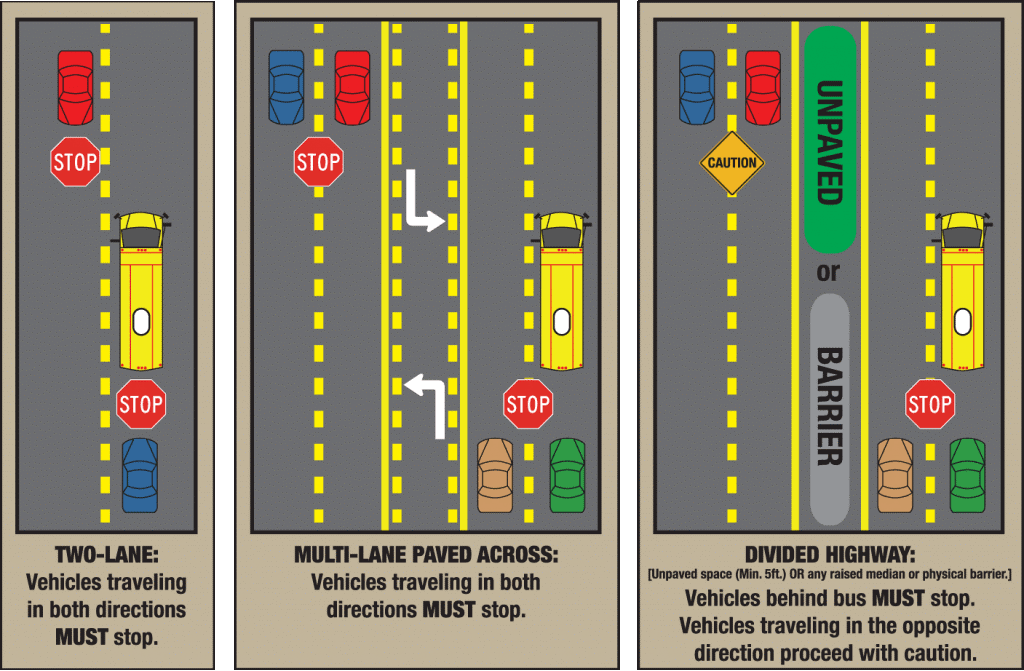
Keeping students safe is the top priority, so let’s discuss some important school bus safety driving tips when near a school bus.
School Bus Safety Tip #1
What do the flashing lights on a school bus mean?
There are three main lights that a school bus has beyond headlights and brake lights and they are designed to help communicate to other motorists and keep children safe.
White strobe lights are used when there is low visibility, such as fog in the morning or severe rain so other drivers know the bus is there and that children are nearby.
Yellow flashing lights indicate the bus is preparing to stop to load or unload children. While yellow lights are flashing, motorists should slow down and prepare to stop their vehicles. With that said, the yellow lights are not a signal to motorists to speed up before the red flashing lights illuminate.
Red flashing lights and extended stop arms indicate the bus has stopped and children are getting on or off.
Before driving again, motorists must stop their cars and wait until:
- the red lights stop flashing,
- the extended stop-arm is withdrawn, and
- the school bus begins moving
School Bus Safety Tip #2
When do you need to stop for a school bus?
According to the National Highway Traffic Safety Administration, all States require the traffic in both directions to stop on undivided highways when children are getting on or off a school bus.
For multi-laned highways with a paved middle turning lane, generally traffic on both sides must stop for the bus. However, traffic in the state of Washington, for example, does not have to stop in the opposite direction when drivers are on a road with three or more marked lanes, and that includes roads with two travel lanes separated by a turn lane.
State law varies on requirements on a divided highway and what constitutes a divided highway. However, in all cases on divided highways, traffic behind the school bus must stop.
When facing a school bus with its flashers on at an intersection, traffic must stop and wait until the bus moves again.
Below is a simple graphic to depict these three situations and what is required for all lanes of traffic.

School Bus Safety Tip #3
How do you pass a school bus safely?
If you do want to pass a school bus, be sure to do so with caution. Children can be on any side of the roadway and can be unpredictable when the bus approaches, even with the flashing lights are not on yet.
Drivers always need to follow general road rules, such as not passing when there is a double yellow line.
However, there are additional rules when it comes to passing a bus.
Drivers cannot pass a school bus while its’ flashers are on when traveling in the same direction. Similarly, traffic cannot pass the bus on the right where students are getting on or off.
Knowing your state laws becomes more important when it comes to passing or stopping when a school bus is turning around in a driveway or parking lot.
For example, in Pennsylvania, Maine and New York, it is illegal to pass a stopped school bus with red lights flashing on school property, on any undivided highway or parking area.
The bottom line is always be careful, watch your speed, and use common sense around buses, children near roadways, and school zones.





